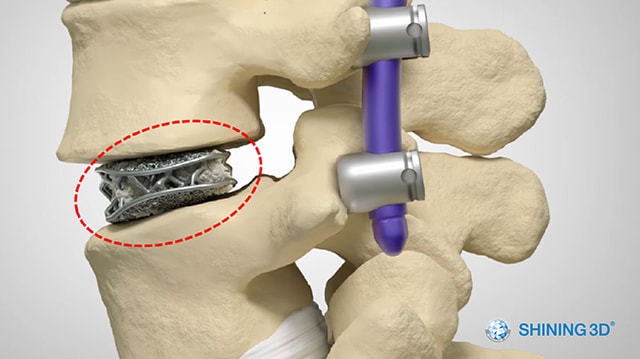As additive manufacturing technologies continue to advance so do their applications and accessibility. While rapid prototyping and tooling have been at the forefront of 3D printing, the endgame has always been to be able to print directly into production, or direct to manufacturing. The medical world is no different. While the first applications of 3D printing in medical fields were prototyping and visualization guides, the technology has finally reached the point of customized implants using state of the art 3D Printers.
SHINING 3D has always stayed true to their vision of making customized 3D solutions available to everyone. With the latest line of 3D Metal Printers SHINING 3D has attracted the attention of partners in the medical world that are putting this technology to incredible use. One of the partners that is pioneering the way medical implants are created and used is MANTIZ.
MANTIZ is a medical device company driven to utilize superior engineering and technology to achieve pain-free, active lives for all patients with spinal disorders. MANTIZ has received KFDA Certification (Medical device approval) and was listed in the HIRA (Health insurance review and assessment) list for South Korea. MANTIZ started the development of their 3D Printed Cage implants in 2018 with the approval and funding of their government. In May of 2019, they launched PANTHER 3D printed cage system for PLIF (posterior lumbar interbody fusion) /TLIF / OLIF / ALIF surgery. This process would use their 3D printed cage implants without the need of outsourcing the production process to a 3rd party. This in turn saves the clients time, money, and the reduces the chances of mistakes in production.
MANTIZ is using the EP-M250 metal 3d printer from SHINING 3D to manufacture the Titanium 3D printed cages and use them in the implant surgery. The entire process to make the shape of implants is done in-house by MANTIZ. The cages are designed to specification; size, material, shape and porosity are all vital to the effectiveness of the implant. The completed design for the cages is uploaded into the printer’s software where it is prepped for printing. Using the EP-M250’s large print bed they are able to print over 50 individual implants in one build. Once implanted, the surrounding bone and tissue begin to fuse with the implant creating a solid structure in the patient’s spine. The inventor of PANTHER 3D printed cage system in MANTIZ, Hongwon Yoon (CTO of MANTIZ), said “We have completed the development of more improved Titanium 3D printed cage implant using EP-M250 metal 3d printer. The mechanical test results prove the safety and functionality of our implants. The average closed porosity of 3D printed titanium solid part is 3%. It leads to accelerated protein and mesenchymal stem cell attachment for bone fusion.”
Subscribe to our Newsletter
3DPResso is a weekly newsletter that links to the most exciting global stories from the 3D printing and additive manufacturing industry.




























